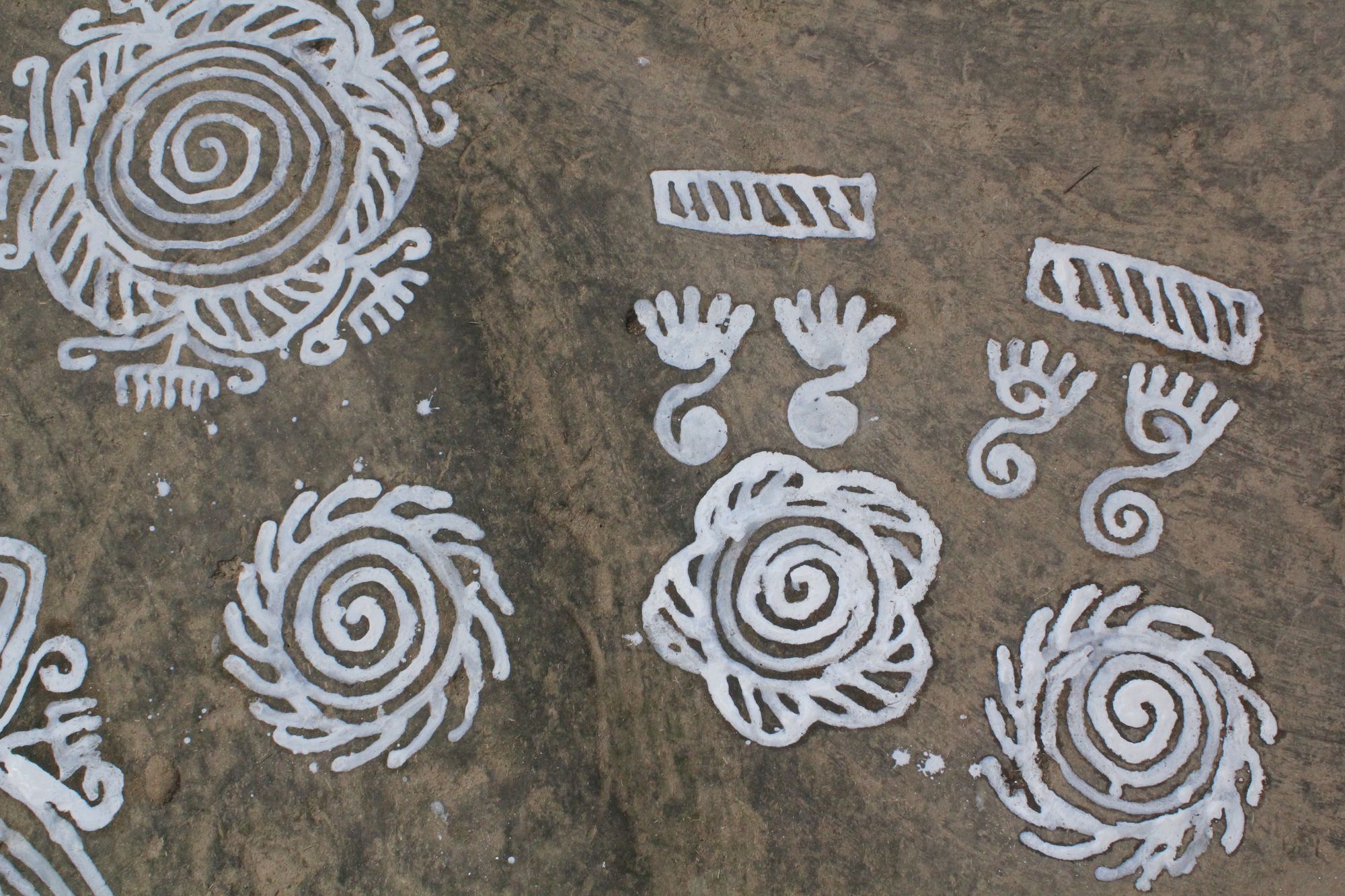Alpona: Images and Symbols of Bengali Women
In Bengal, ephemeral designs are called alpona, alpana or alimpan and are associated with rituals called brata performed by women during festivals.

This is my first visit to Bengal. I had been dreaming for years of discovering these ephemeral beauties described and illustrated in "L’Alpona ou les décorations rituelles au Bengale » (Alpona, ritual decoration of Bengal", a captivating little book that I had borrowed from the library of the Guimet Museum of Asian Art in Paris. Since then, I have acquired a copy of the precious book and each time I read it, I wonder if this graphic heritage of Eastern India is still alive.

In this region, these ephemeral drawings are called alpona, alpana, or alimpan, and are closely linked to seasonal female rituals called brata. These rituals occupy a central place in the lives of village women. Between domestic piety and the celebration of the forces of nature, the brata are dedicated to the celestial bodies, the deities, and more particularly to the goddess of abundance Lakshmi or Lokkhi as she is invoked here. Some brata are very popular, some more exceptional. Others are accompanied by songs and dances, and there are all kinds of brata: for the protection of children or husbands, to ensure good harvests and bring abundant rainfall, to increase the fertility of the alluvial plains. The texts and legends that accompany the drawings sing of the triumph of the sun and the defeat of winter, others relate to the marriage of the moon with the sun in spring, others still celebrate the birth of spring and its marriage with the earth.
In Pather Panjali by Bengali filmmaker Satyajit Ray, a young girl called Durga performs the Punyipukur brata. Kneeling outside her house, she digs a miniature pond in the ground, plants a twig in it, offers flowers and calls for rain but also for divine blessing to obtain a good husband:
“Holy pond, flower garland, who prays here at noon? I am the pure maiden, Leelavati, the sister of my brother…Mother Goddess, teach me. I do know not how to pray. May I give my husband a son. May I die by the Ganges. Oh Haro, of Parvati…May I always be pure”.
The following scenes show a pond rippling in the wind and a lotus meadow swaying in the rain (4.19) The girl prepares and digs the miniature pond, the prayer starts at 5.38 until 6.01).
Next articles:
Bengal alpona, "The River by Jean Renoir"— part 1
Bengal alpona, "Meeting with Kolkata" — part 2
Bengal alpona, "At Sumitra’s home"— part 3
Bengal alpona, "Poush Sankranti at Sumitra’s home" — part 4
